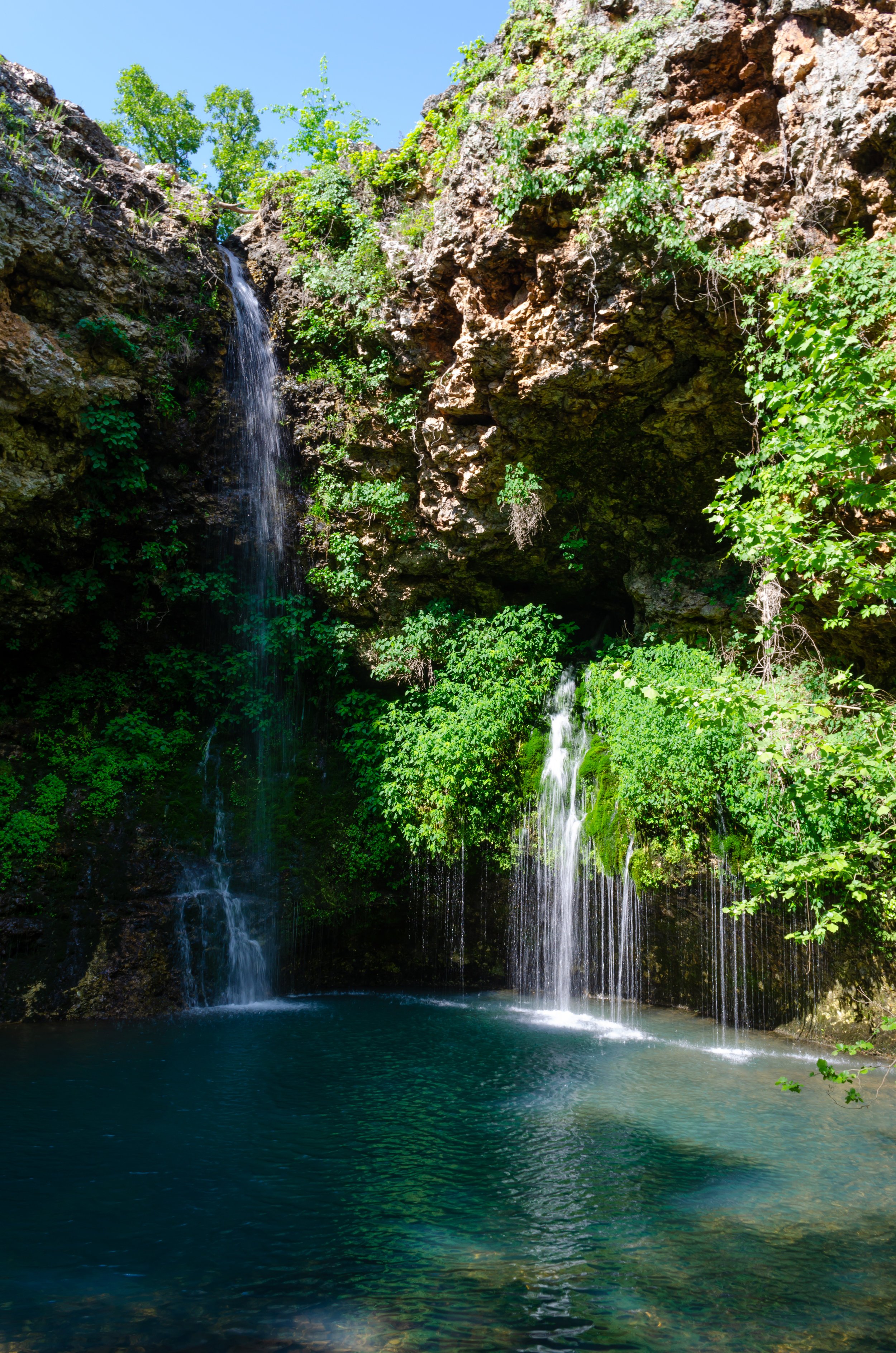Dripping Springs (Natural Falls State Park)
Originally posted on May 23, 2018
Positioned on the western edge of northwest Arkansas, Siloam Springs is well situated to attract nature lovers. The town itself has a scenic walkway and cycling path weaving through it, and the downtown district is surrounded by a beautiful creek with a forested bluff rising above one side of it. Outside the town, the Illinois River winds through the area to the south, the hilly terrain is great for mountain biking to the north, Hobbs State Park is a short drive to the east, and Natural Falls State Park in Oklahoma is an even shorter drive to the west.
This week’s featured photo, donated to the museum in 1986, shows a man standing beneath the 77-foot waterfall at Dripping Springs within what is now Natural Falls State Park. The photo may have been taken in the 1950’s or 1960’s, though no information about the date was included in the donor entry.
Today, the falls look similar to this photo, but to preserve the area, hikers are no longer allowed to climb the bluffs.
The history of ownership for the Dripping Springs area dates back to around 1907, according to Park Manager Tracey Robertson. But, he says, before the land was formally owned, people frequently used the springs and the falls for a source of water and the ravine for shelter. Long ago, several Native American tribes used the area as hunting grounds and for fresh water. During the Civil War, soldiers of the North and South alike used the area as a hidden shelter, though no battles were ever fought there. According to Robertson, anecdotes say that if Union soldiers saw Confederates approaching, they would simply vacate the area and allow the Confederates to use it, and vice versa--almost as if the two sides took turns using the falls. There is even an urban legend (for which there is little or no evidence) that the Confederates, in a haste to leave the area, hid a shipment of gold beneath the falls and never returned for it.
In 1907, the Carnes family took ownership of the Dripping Springs area, says Robertson. The Siloam Springs Museum has two photos which were probably taken while the Carnes owned the property. In these photos, notice the trough which was set up to redirect water from the spring.
Robertson says the area had several owners between the Carnes and the state of Oklahoma. According to Maggie Smith’s book, Hico, a Heritage: Siloam Springs History, the Gadient family owned the falls in the 1970s. While the Gadients owned the property, several scenes were filmed at the falls for the movie Where the Red Fern Grows (1974).
The Gadients wanted the area to be preserved for future generations, so they sold the land to the state of Oklahoma in the early 1990’s. Natural Falls State Park opened to the public in 1997. Today, the park receives around 100,000 visitors per year. “People come here to camp and to hike the trails and just to relax--reconnect,” says Robertson.
Entrance to the trail leading to the waterfall.
Thanks to the high attendance the park has enjoyed in recent years, it was able to build several yurts to house more guests. Designed after a traditional Mongolian dwelling, the sturdy circular tents combine camping with a hotel-like experience. In addition, the park has accommodations for RV’s and camping, around 4.5 miles of hiking trails, and areas for many outdoor sports.
The park opened several yurts last year.
The park has about 4.5 miles of hiking trails of varying difficulty levels.
For more than a hundred years, residents and visitors of the Siloam Springs area have enjoyed the falls at Dripping Springs. Be sure to visit them for yourself!
Written by Chuck McClary
Sources:
Hico, a Heritage: Siloam Springs History by Maggie Smith
Oklahoma Tourism website
Siloam Springs Museum archives
Tracey Robertson, Park Manager, Natural Falls State Park, interviewed 5/22/2018
Photos:
Siloam Springs Museum
Siloam Springs Museum archives








